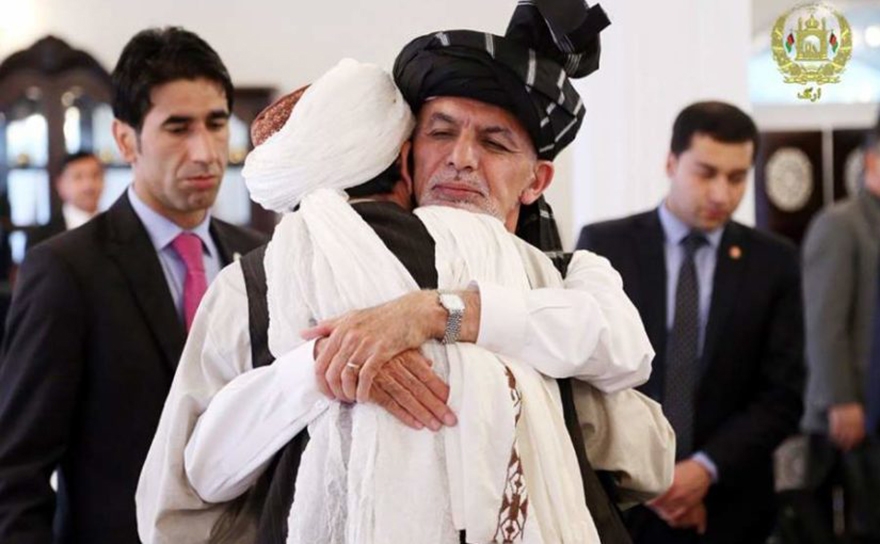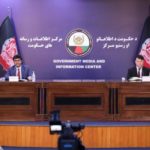War and violence are the two most destructive phenomena that have been taking people’s lives and annihilating Afghanistan’s beauties, material and spiritual wealth from many years ago. In the last decades, besides war and violence, political instability is also among the most important factors. On one hand, these factors have prevented Afghanistan from rebuilding its infrastructure and economic development, and on the other hand, have made it one of the most corrupt and poorest countries in the world. Not long back, this country was once one of the strongest political powers in central Asia 40 years ago. Now the question is that, isn’t it the time now to end war and violence, and return the country’s previous political authority and power?
The collapse of the Taliban government in 2001 was seen as a golden chance in the transition from war and violence to peace and the re-establishment of new governance in Afghanistan. Over time, with the formation of the Afghan Interim Administration (AIA) in December 2001, and later the establishment of the government of the Islamic Republic of Afghanistan under the leadership of Hamid Karzai, their aspirations were not fulfilled, because, by the time, Taliban, Al- Qaeda and other terrorist groups reopened footprint in some parts of the country and rekindled the half-extinguished flames of war, which spread throughout the country.
Despite millions of dollars were donated to Afghanistan after the Bonn Conference by the international community for the purpose of rebuilding the country and thousands of foreign troops flocked all over to fight and eliminate the terrorism which was a serious threat to the region and the world, but still, the Afghan government leaders were not only able to use these aids properly but also due to their failed leadership trends, the country soon became embroiled in corruption and war with various other terrorist groups.
Taliban were after taking revenge from foreign troops and the newly formed Afghan National Security Defence Forces (ANSDF). But this time, the Taliban insurgence were emerged more equipped and powerful than before, they were backed by some other countries in the region. Besides international troops, Afghan National Security Defence Force has been fighting against terrorist groups including the Taliban with the suffering of many casualties from 2001 to date.
After years of a failed administration by Hamid Karzai, he handed over an immersed government in corruption and war to Mohammad Ashraf Gani, who became the president of Afghanistan after signing a political agreement in 2014 forming a National Unity Government (NUG) with Abdullah Abdullah. At that time, it was hoped that Ashraf Ghani might have brought the key to peace, reconstruction and economic development and he can be a cure for the country’s pain, which unfortunately never happened during the last five years.
After the formation of the National Unity Government (NUG), which led by Ghani and Abdullah, the people came to this conclusion that instead of solving the people’s problems, they (the two leaders) are one of the biggest problems themselves. Even their conflicts created a political crisis in the country.
Despite all the above-mentioned problems in the Afghan administration, some efforts were made during the NUG times to end the war and enter into peace deals with different terrorist groups. For instance, Gulbuddin Hekmatyar, the head of an anti-government militant group who fought against the Afghan National Security Defence Forces for many years, was the first who signed a peace agreement with the government and his fighters and militants put down the guns and joined the peace process.
The United States which is one of the prime supporters of the Afghan government agreed to initiate face-to-face peace negotiations with the Taliban for the first time. The peace talks between the Taliban leaders and the U.S special envoy for the Afghan peace process, Zalmay Khalilzad run over a year which had many ups and downs and eventually concluded with the signing of a peace deal between the U.S and the Taliban in late February 2020.
The agreement which was signed between the two parties focused on the following four points:
- Taliban agreed that the Afghanistan territory will not be used against U.S. security and its allies.
- The international troops will pull in 14 months
- An Intra-Afghan talk to begin between Afghan leaders and the Taliban.
- The ceasefire, to be discussed during the intra-Afghan talks.
This historic peace agreement between the United States and the Taliban was signed at a time when the political tensions between Ghani and Abdullah were at its peak. Political tensions boosted when the Afghan Independent Election Commission announced Ashraf Ghani as the winner but Abdullah did not accept the results and claimed victory.
After months of political controversy, Afghan political leaders mediated between the two sides for weeks and eventually, Ghani and Abdullah signed a power-sharing deal based on which Abdullah will lead the reconciliation process and his running mates will be considered in the cabinet.
The political tensions ended at a very good point and now it is time that the Afghan government gets ready for the Intra-Afghan negotiations with the Taliban. Both the Taliban and the Afghan government have shown eagerness in the commencement of the talks by initiating the prisoners’ release process. The Afghan government has so far released 3,000 Taliban detainees and the Taliban has freed over 500 Afghan armies who were at their custody.
The pro-Afghan countries’ efforts for peace have given this hope to the Afghans that they will reach to peace and end their long war. People also expect that the Afghan government must use this unique chance to end violence and rebuild the country.













